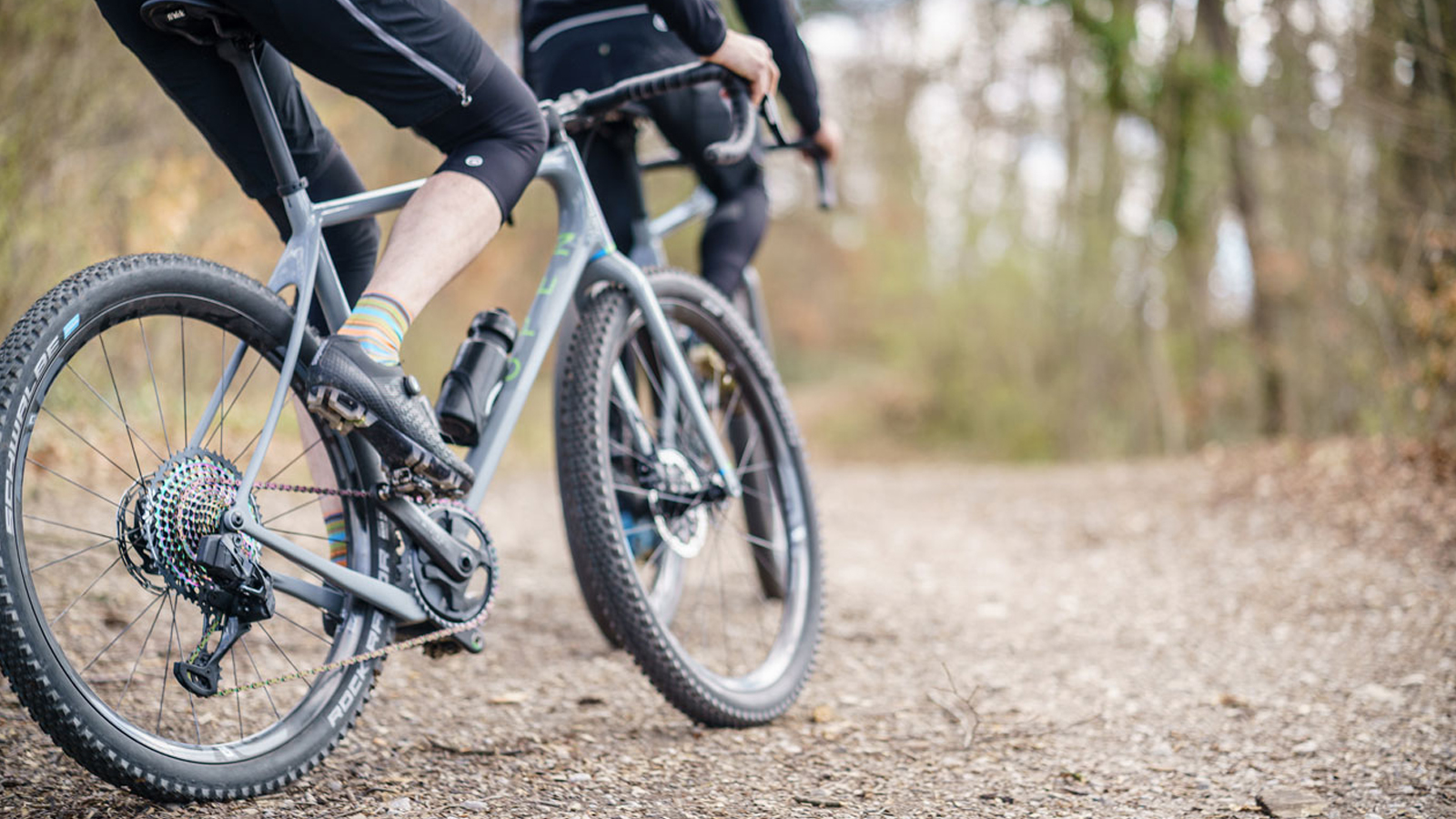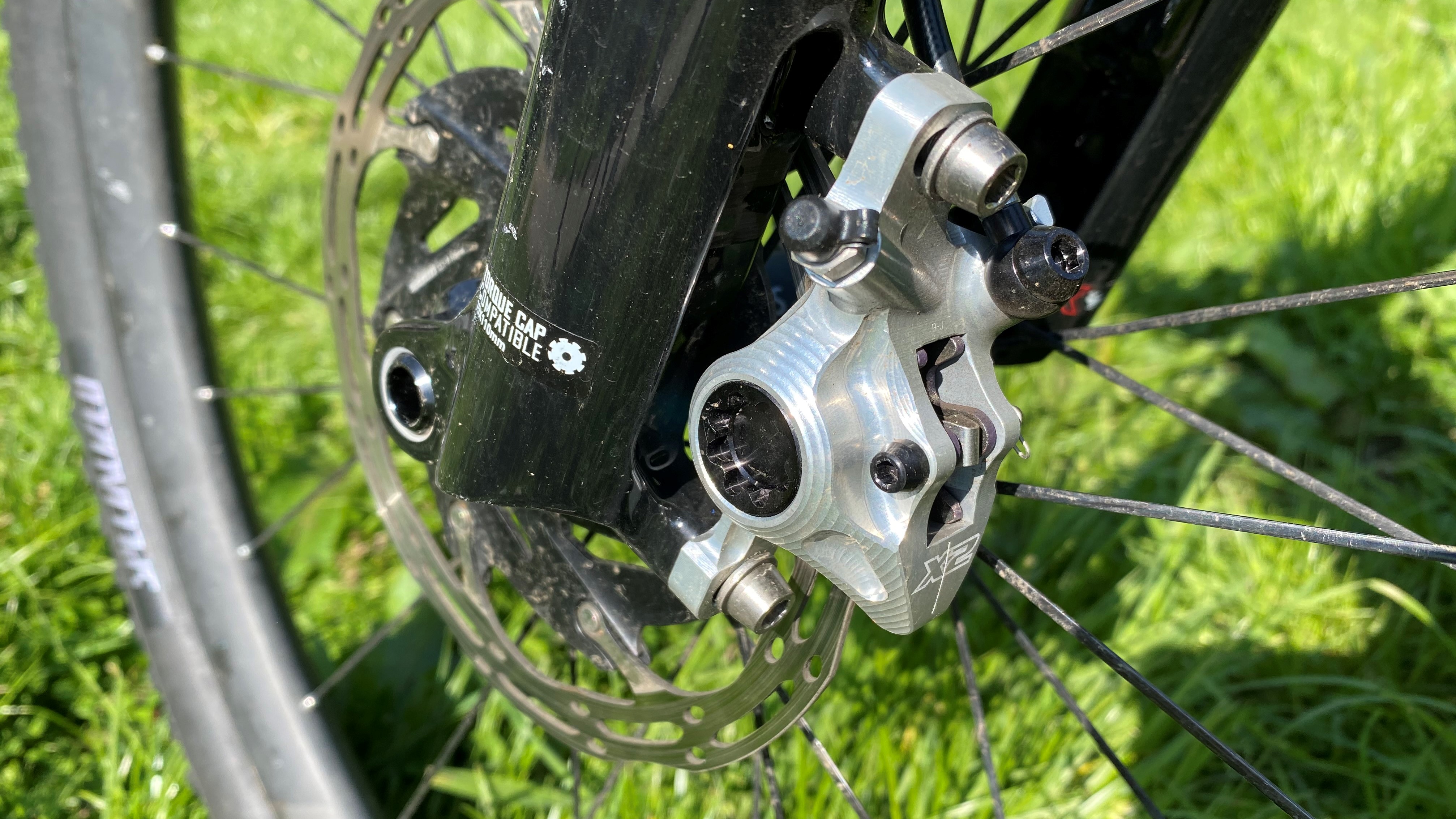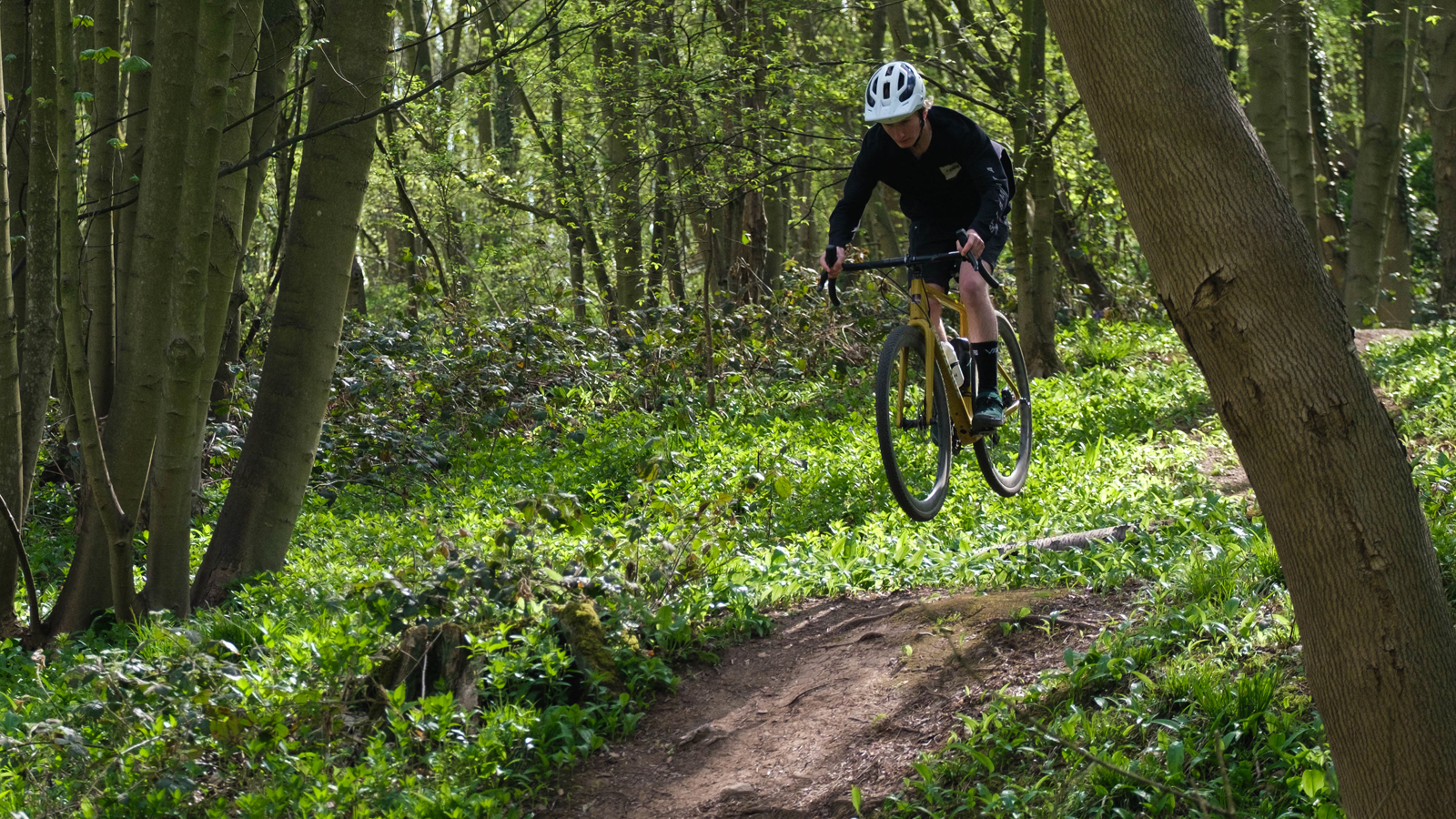What is a gravel bike?
Everything you need to know about the trendy off-road bike with drop-style handlebars

If you're asking yourself what a gravel bike is, you're not alone. This seemingly chameleon-like, versatile do-it-all bike stumps many people, but with the best gravel bikes out there ready to be ridden, it's better to find out rather than miss out. We've previously attempted to answer the question, 'when does a gravel bike become a mountain bike?', and we've outlined the differences in our head-to-head piece, gravel bike vs mountain bike, so we recognise where the confusion comes from. So here we're going to answer the question, 'what is a gravel bike?'.
Picture a Venn diagram composed of road bikes, mountain bikes, and cyclo-cross bikes. The overlapping sections designate shared traits and features of each bike, while the outermost shapes detail distinct differences between the three bike styles. Somewhere in the middle, borrowing features from all three bikes, is the gravel bike.
These trendy bikes are designed for off-road riding, but are still more than capable of handling pavement at speed. While gravel bikes are unique and different, they also share many of the same qualities in handling and feel as other styles of bikes.
Nowadays, there are gravel bikes to fit almost every need, from smooth sand to chunky rock gardens. Whether you are a bikepacking adventurer or a hardcore gravel racer, there is a gravel bike designed for you. In this article, we’ll detail the ins and outs of a gravel bike, and what makes them so unique in the catalog of two-wheeled machines.
The life of a gravel bike
Gravel bikes are designed for mostly off-road riding, but are still able to maintain speed and agility on tarmac. Many gravel bikes include features that make them capable of handling tough off-road sections and bumpy singletrack.
Versatility is one of the standout features of gravel bikes as their build and design makes them well-suited for long endurance rides, undulating off-road terrain, and long-distance bikepacking. Gravel bikes are never without their race-ready features either, such as drop bars and lightweight frames.
There is also a wide variety of gravel bikes including both race frames and heavy-duty adventurers. Let’s dive into the details of what makes every gravel bike unique, and what separates one style of gravel bike from the other.
Frame
Classically designed with either aluminum or carbon, gravel bike frames are similar to other styles of frames such as road bikes or cyclo-cross bikes. As with other styles, aluminum frames are almost always cheaper than carbon frames, while still being relatively lightweight and durable.
Carbon gravel bike frames are lighter, and are more often the race-ready frames built for gravel racing. You can even find gravel frames branded as an ‘aero gravel bike,’ for roadies-turned-gravel-racers. There are also custom-built gravel frames, typically made of steel and designed to fit your unique proportions.
The goal of a gravel bike’s frame is to be lightweight, stiff, and durable due to the challenging off-road conditions that you’ll encounter on every ride. Gravel bikes are designed to be almost limitless, and their frames reflect that. They are designed to never hold you back, whether it’s a steep gravel climb or a rough and rocky section of road – all the while, the lightweight frames are ready to jump into to a race whenever you are.
Geometry
Upon first glance, gravel bikes don’t have their own unique style in terms of geometry. When set side-by-side, there isn’t a whole lot to distinguish between a gravel bike, versus a road bike or cyclo-cross bike. All three styles' geometry sit somewhere between comfortable and aero, and are designed to handle well in corners and be quick on climbs.
With a closer look, you can see that gravel bikes are geared more towards all-terrain comfort and versatility, rather than mainly performance and speed. This is because gravel bikes are designed to be ridden for a long time – upwards of eight hours a day usually – rather than road or cyclocross bikes which are designed to be comfortable for a fraction of that time.
Gravel frames are also heavier than most road and cyclocross bikes because of their durable design and support for accessories including the best bikepacking bags, the best MTB fenders, and the best mountain bike lights.
In terms of specific geometry, gravel bikes are basically built ‘longer’ than road bikes and cyclocross bikes, typically having slacker head tube angles and a longer wheelbase. This creates a wider ‘footprint’, increasing stability and improving handling. As opposed to the quick and twitchy handling of cyclocross bikes, gravel bikes have a much smoother feel, especially at higher speeds and on technical terrain.
Gravel bikes also have a more upright riding position compared to road bikes, despite their similar looks. Both bike styles have drop bars, which create a longer and narrower shoulder stance for handling, as opposed to mountain bikes which use wider flat bars. Gravel bikes also have a longer head tube and shorter reach, which puts them in a more upright position compared to road bikes.
Adventure-style gravel bikes will often have flared bars which are a mix between drop bars and flat bars. The flared part of the bar provides a wide grip for improved handling, especially on technical descents. Lastly, there is plenty of room left in the design of gravel bike for wide tires so you won’t have to worry about mud or gunk getting stuck between your tires and the frame, and you gain more traction on loose ground.
Tires
Speaking of the best gravel tires, there is a wide variety suitable for almost every terrain. The styles vary from pavement-ready slicks and semi-slick race tires, to ultra-wide 50mm tires that can handle your local rock garden. Most gravel bikes can fit up to 42-45mm wide tires, with the most common tires being 35-40mm wide depending on the terrain.
Gravel tires are designed to be more puncture-resistant than road tires, while also having thicker and carefully-engineered treads to handle everything from sand and mud to deep sections of gravel. Most gravel riders also keep their tires pumped up to only 30-50psi, which is low enough to make most road riders cringe. However, the wider and more durable tires roll and handle best at these low tire pressures, making them one of the most versatile combinations of bike and tire.
Most gravel tires are tubeless these days, which means that you’ll probably need sealant and a compressor or good quality track pump to set them up – but once you have your tubeless tires mounted, you get all the benefits of self-sealing punctures while you’re still riding. This is ideal for both gravel racers and bikepackers, as you’ll spend much less time on the side of the road.
Brakes
This one’s pretty universal: just about every gravel bike has disc brakes. Some are mechanical while others are hydraulic, but either way, they are more powerful and versatile than traditional rim brakes. Disc brakes offer more overall stopping power than rim brakes, as well as effective modulation and high-quality performance barely effected by wet weather conditions. On top of all of that, they also leave more room for wider tyres.
Wheels
The best gravel wheels tend to come in either size 700c or 650b. 700c wheels offer the best balance between comfort and performance, while 650b wheels are better-suited to off-road riding because of the wider tires they can fit compared to 700c wheels. They're also much better for shorter riders as it helps to keep the frame geometry in proportion when sizing down.
Gearing
There is no clear winner when it comes to gearing on a gravel bike – some riders prefer 2x while others prefer 1x. Whichever side you’re on, the options are there. Gravel riding is always a combination of technical off-road terrain, high-speed descents, and light or chunky gravel sections, so you’ll probably have to make the call depending on where you live and where you most frequently ride.
1x gearing setups use just one front chainring and are less prone to dropped chains. They are also lighter and less complicated than other setups because there is no need for a front derailleur. However, you’ll have less gearing options as well as larger jumps between gears with a 1x set-up; but with so many manufacturers making up to 12-speed rear cassettes, you’ll still have plenty of options to choose from for hilly terrain.
2x gearing setups are more versatile than 1x, giving you a wider range of overall gearing for those ultra-steep climbs. As opposed to a traditional road chainring combination (53/39T), 2x gravel set-ups usually have a compact front chainring (50/34T). Some gravel bikes have even smaller front chainrings such as a 48/32T or 46/30T for climbing, where you can also find large rear cassettes such as an 11/34T.
What makes a gravel bike unique?
While gravel bikes borrow many features from their other bike cousins, they are still their own unique machine. For example, gravel bikes have drop bars like road bikes, but gravel bikes often have added flares and wider handlebars for better overall handling and comfort.
Heavy-duty gravel bikes designed for bike-packing have many of their own unique features such as built-in mounts for mudguards, racks, extra bottles, storage, and more. Many gravel bikes have built-in mounts for lights, perfect for adventurers and commuters no matter the time of day. For the true off-road explorer, some gravel bikes even have suspension to help cushion especially rough roads.
Summary
Overall, gravel bikes are designed to be lightweight, fast, comfortable, and durable off-road bikes. They borrow a lot from mountain bikes, road bikes, and cyclocross bikes, while still maintaining their own identity.
With drop bars, wide tires, and unique geometry, gravel bikes create a unique balance of comfort and speed, well-suited to off-road terrain without being slow on the road either. For everything on-road and off-road, in variable weather conditions, on hilly or technical terrain, whether it’s a one-hour sprint or an eight-hour trek, there is a gravel bike built for the task.
In addition to elite-level road, track and Zwift racing, Zach Nehr is a freelance writer and the head of ZNehr Coaching. He contributes written articles on a variety of cycling-related subjects, including product reviews and advertorials, as well as feature articles and power analyses. With a Bachelor’s Degree in Exercise Science from Marian University-Indianapolis, Zach spends his time working with endurance athletes of all ages and levels at ZNehr Coaching. Having entered the sport at age 17, Zach has had a successful racing career, winning the 2017 Collegiate National Time Trial Championships and a 9th place finish at the 2019 US Pro National Time Trial Championships. These days, Zach spends most of his ride time indoors, racing on RGT Cycling and competing in the Zwift Premier League with NeXT eSport.






